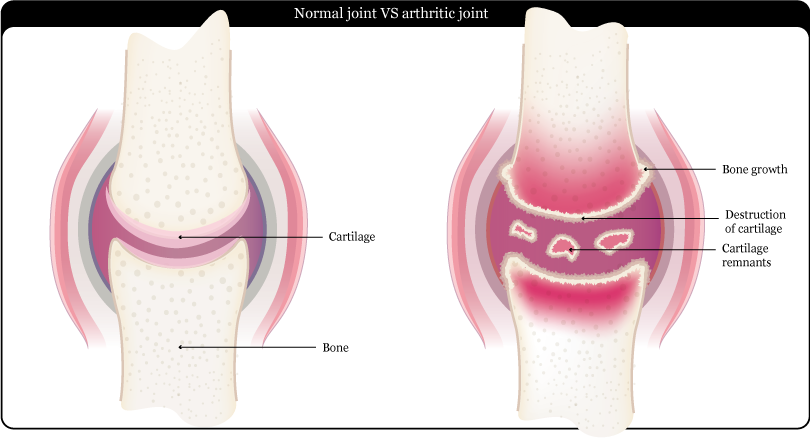Bone Disease
Osteomyelitis
This means inflammation of the bone and can occur if the bone gets infected by bacteria. This infection can occur following:
• Surgery on a bone for example to repair a fracture – although surgical procedures are made as sterile (clean) as possible there is a chance that bugs such as bacteria may enter the bone.
• Open fractures – these are fractures where the broken bone is exposed to the outside world due to damage to the skin and muscles around it.
• Deep wounds that reach the bone.
• Spread of infection from other parts of the body in the blood stream.

The condition can be acute (occur suddenly) or chronic (develop slowly over a period of time).
The symptoms tend to be more severe for acute conditions and usually involve:
• Severe lameness (limping or not putting any weight on the affected leg).
• Swelling.
• Pain.
• If your pet has a fever they may be off their food and off colour.
In chronic conditions the limping is usually less severe, and your pet is not likely to be unwell in themself.
Your vet may take x-rays of your pet’s leg to look for changes in the bone. Click here to find out more about Diagnostic Imaging. These are usually seen in chronic conditions. They also may take a sample (fine needle aspirate) from the affected area or a blood sample to send away for culture and sensitivity to find out which bacteria are present and which antibiotics to use.
Treatment of bone infections usually requires a long course of antibiotics, and sometimes two antibiotics are used together. It is important that the full course is given otherwise the infection may return. Your vet may also need to address other problems, for example fractures, which may require surgery.
Osteoarthritis (Degenerative Joint Disease)
This is the correct term for what is often just known as arthritis, and is very common in our pets (and in people). This condition affects the joints, and can occur in one or several joints. It usually occurs in older animals. The cartilage in a joint covers the ends of the bones to help the joint move smoothly and protect the bone. In osteoarthritis this cartilage deteriorates, and the bone then responds by producing bony growths around the edge of the joint. These areas of new bone can stop the joint moving as well, and can cause pain when the joint does move. Often there will also be thickening or swelling of the joint.

Animals are more likely to suffer from osteoarthritis:
• If there has been a previous injury or surgery of a joint.
• If they have a developmental joint disease. This includes hip and elbow dysplasia – these are the problems that are looked for on hip and elbow score x-rays for breeding dogs. Hip dysplasia is the most common, and means that the hip joint is looser than it should be which can damage structures within the joint. These problems are more common in large breeds of dog.
• If they are overweight.
We often make the mistake of thinking that our pets slowing down as they get older is just a normal part of ageing. However, it may be that they are suffering from osteoarthritis, in which case there may be things we can do to help them feel younger and more comfortable again!
Things you may notice if your pet is suffering from osteoarthritis include:
• Limping or a stiff looking walk.
• Dogs: Not wanting to go for walks, or not walking as far or as quickly. Cats: not jumping as much, resting more and stopping grooming around their back end.
• Stiffness after they have been resting.
• Pain around affected joints.
• They may become grumpy if they are uncomfortable.
• Problems with toileting – they may have accidents in the house or be “caught short” if they are reluctant to move.
Osteoarthritis is a progressive condition that cannot be cured or reversed but it can be managed. The aim of management is to reduce pain, slow down the progression of the condition and allow the affected joints to move more easily again.
Things that can help include:
• Moderating exercise – short, frequent, gentle exercise is best.
• Physiotherapy and hydrotherapy can improve joint motion and strengthen muscles.
• Weight loss is very important if your pet is overweight as it will reduce the burden on the joints.
• Pain relief and anti-inflammatories are often used. In many cases these can be used just for a flare-up, or at a low dose to keep your pet comfortable.
• Specific feeds with the particular nutritional purpose of supporting joints with osteoarthritis.
For further information on osteoarthritis please visit our partner site www.cimydog.co.uk
Disclaimer: This website has been designed to offer information surrounding the use of antibiotics and infection control for pet owners. It does not replace advice from your veterinary surgeon. If you believe your pet is unwell or you have any questions relating to their treatment, please always contact your veterinary surgeon for advice.

